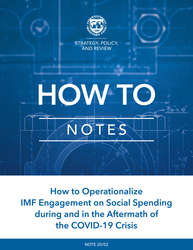
How to Design a Presumptive Income Tax for Micro and Small Enterprises
Presumptive income taxes are prevalent in developing countries. This note addresses how to design a tax on turnover—which taxes it replaces, what the criteria are for eligibility, how to determine the optimal threshold, and how to set the tax rate.
READ MORE...
Volume/Issue:
Volume 2023
Issue 002
Publication date: June 2023
ISBN: 9798400241154
$5.00
Add to Cart by clicking price of the language and format you'd like to purchase
Available Languages and Formats
| English |
Prices in red indicate formats that are not yet available but are forthcoming.
Topics covered in this book
This title contains information about the following subjects.
Click on a subject if you would like to see other titles with the same subjects.
Economics- Macroeconomics , Taxation - General , Economics / General , Presumptive tax , turnover tax , informal sector , microenterprises , taxpayer Compliance cost , turnover tax rate , turnover tax systems , IMF library , Sales tax , Income and capital gains taxes , Income tax systems , Corporate income tax , Effective tax rate , Africa , South America , Eastern Europe , West Africa , Western Europe
Also of interest
Summary
Turnover taxes are prevalent in developing countries as a simple form of presumptive taxation of business income. Such simplified tax regimes can reduce the relatively high compliance costs of micro and small enterprises, which might otherwise discourage entrepreneurs from formalizing their activities and paying taxes. The note addresses design issues for a turnover tax regime—which taxes it replaces, what the criteria are for eligibility, how to determine the optimal threshold, and how to set the tax rate. A key observation is that, although low turnover tax rates may incite larger firms to artificially reduce their sales, the rate should also not be so high as to discourage formalization of activities. A table of tax rates and turnover thresholds observed internationally is provided. The note concludes by suggesting analytical steps to guide practitioners in designing turnover tax regimes.
Copyright © 2010 - 2025
Powered by:
AIDC



